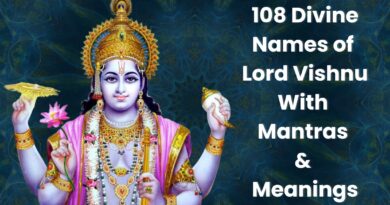Why Love is the Final Illusion, According to the Bhagavad Gita
Discover why the Bhagavad Gita describes love as the last illusion. See the spiritual insight behind attachment and selfless love, and follow the path toward liberation.
Love: The Ultimate Illusion, as Explained in the Bhagavad Gita
For most people, love is that purest of divine emotions; however, as presented in the Bhagavad Gita, it is even more profound-actually challenging all conventional understanding about love. According to this ancient scripture, love, in its worldly form, is the final illusion (Maya) that binds the soul to the cycle of life and death. But does this mean love is an illusion in itself? Not quite. The Gita teaches that attachment masquerading as love is the real deception, preventing us from realizing our true divine nature.
In this blog, we explore why love is considered the last illusion in the Bhagavad Gita, its connection to attachment, and how to transcend it to attain self-realization and eternal bliss.
Understanding Love Through the Lens of the Bhagavad Gita
It is a spiritual guide that covers the issues of human suffering, duty, and liberation. In this context, the Bhagavad Gita forms part of the Mahabharata, which is where Lord Krishna imparts wisdom to Arjuna. He teaches about the impermanence of worldly emotions, which includes love.
Love is not denied in the Gita; however, it is understood in two different ways:
Worldly Love (Samsaric Love) – Rooted in attachment, emotions, and expectations.
Divine Love (Bhakti or Unconditional Love) – It is born out of selflessness, surrender, and union with the Supreme.
Worldly love is where the illusion begins. When we are attached to the person we love, we begin to fear that we will lose them. So, it perpetuates suffering, desire, and ego, thereby keeping us chained in the circle of birth and rebirth- Samsara.
Why is Love Considered the Last Illusion?
1. Love Creates Attachment (Moha)
In Chapter 2, Verse 62-63, Krishna says attachment leads to desire, desire leads to anger, and anger leads to the destruction of wisdom. We start attaching ourselves to people or emotions and thus create expectations, fears, and dependencies that fog our judgment.
2. Love Strengthens the Ego (Ahamkara)
It is the ego that feeds on love mixed with possession and identity. People say, “This is my partner, my child, my friend,” reinforcing ownership over relationships. This illusion of control creates suffering when things do not go as expected.
3. Love Makes One Fear Loss
Krishna teaches us that everything that we see is transient in this world. Attachment with people, objects, or success makes people fear losing these things. In turn, they do not become liberated spiritually or Mokshya.
4. Love Distorts the True Self (Atman)
In reality, the soul (Atman) is eternal and beyond worldly emotions. Love, when bound with material conditions, distorts us into realizing that we are complete within ourselves.
5. True Love is Divine, Not Possessive
In Chapter 12, Krishna refers to Bhakti Yoga (Path of Devotion)—the highest form of love. This love is not one of clinging on to specific individuals but rather surrendering oneself to the divine due to pure devotion. It is selfless, without expectation, and eternal.
How to Transcend the Illusion of Love?
1. Practice Detachment (Vairagya)
Detachment does not mean giving up love, but loving without attachment. Krishna advises acting with love but without any expectation of reward.
2. Shift from Emotional Love to Devotional Love (Bhakti)
Instead of loving with an expectation, love as an offering to the Divine. Bhakti Yoga teaches that when love is directed towards the Supreme, it is no longer an illusion but a path to liberation.
3. Realize the Temporary Nature of the World
The Gita reminds us that everything material is impermanent. Understanding this helps us appreciate love without attachment or suffering.
4. Meditate on the True Self (Atman)
Regular meditation on the eternal self helps dissolve emotional illusions and leads to pure, unconditional love for all beings.
5. Love Without Ownership
The lesson of the Gita is this: Love, but do not possess. Give, but do not expect. Care, but do not cling. True love is free, expansive, and divine.
Final Thoughts: Is Love an Illusion or a Path to Liberation?
The Bhagavad Gita does not abhor love—instead, it redefines love. Love tainted by attachment, ego, and fear is an illusion, while love that is selfless, unconditional, and devoted to the Divine is the highest truth.
Letting go of attachment and expectation will be the true experience of pure love. The illusion of worldly love disappears and we are left with eternal love within and outside us.




